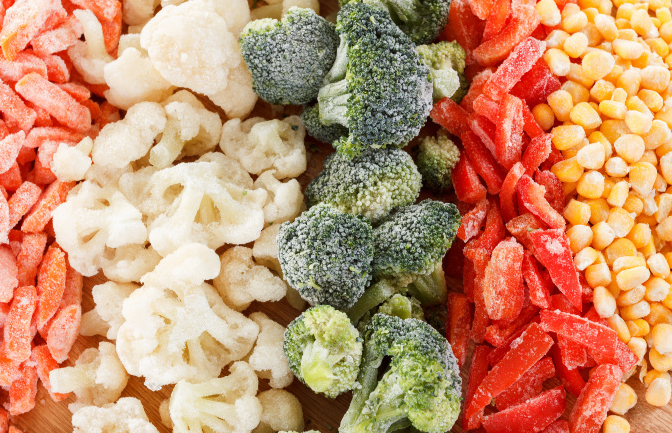Rajasthani Dried Vegetables
Kair (Capparis decidua)
Uses:
- Medicinal Uses:
- Kair has been traditionally used to treat various ailments. It is believed to have anti-inflammatory, laxative, anti-diabetic, anthelmintic, antibacterial, astringent, digestive, diaphoretic, and anodyne properties.
- Specific conditions it may help with include:
- Toothache
- Arthritis
- Asthma
- Cough
- Inflammation
- Intermittent fevers
- Malaria
- Rheumatism
- Swelling.
- Culinary Uses:
- The spicy fruits of Kair are used to prepare vegetables, curry, and fine pickles.
- The young buds and fruits can be eaten raw.
- Kair fruits are also attractive to helpful insectivores.
- Environmental Uses:
- Kair can be used in landscape gardening, afforestation, and reforestation in semidesert and desert areas.
- It assists in preventing soil erosion due to its extensive root system.
- The plant is extremely drought-resistant and tolerates some frost.
- Nutrient Value:
- Kair is a rich source of essential nutrients:
- Calories: Approximately 41.6 kcal per serving.
- Protein: About 8.6 grams.
- Carbohydrates: Approximately 1.8 grams.
- Fiber: A significant amount (12.3 grams).
- Vitamin C: Contains 7.81 mg.
- Calcium: Provides 55 mg.
- Phosphorus: Contains 57 mg.
Remember that Kair’s nutritional and medicinal benefits make it a valuable plant in its marginal habitat.
Amchur: (dry mango powder)
Uses:
- Culinary Uses:
- Amchur powder is widely used in Indian cuisine to add a tangy flavor and a hint of sourness to dishes.
- It is a common ingredient in popular Punjabi dishes like chole, rajma, and aloo paratha.
- When fresh mangoes are out of season, amchur powder serves as a souring agent in North Indian cooking.
- It can be tweaked to replace lemon juice in recipes.
- Medicinal Uses:
- Amchur powder is rich in nutrients and antioxidants.
- It is used in Ayurvedic medicine for various purposes:
- Indigestion: Helps improve digestion.
- Diabetes Regulation: May assist in managing blood sugar levels.
- Iron Boost: A good source of iron, beneficial for treating iron deficiency anemia.
- Skin and Hair Health: Supports healthy skin and hair.
Nutrient Value:
- Per 10 grams (approximately 2 teaspoons) of amchur powder:
- Calories: 36
- Carbohydrates: 9 grams
- Fiber: 2 grams
- Sodium: 300 mg
- Calcium: 20 mg
- Vitamin C: 1.2 mg
Remember that incorporating Amchur powder into your meals can positively impact your overall health and well-being.
Kumta (Acacia senegal or Senegalia senegal)
uses, benefits, and nutrient value of Kumta (Acacia senegal or Senegalia senegal):
Overview:
Kumta, also known as Gum Arabic Tree, is a small thorny deciduous tree found in various parts of India. It goes by several common names, including gum acacia, gum arabic tree, Sudan gum, Sudan gum arabic, kher, khor, kumatiya, or chapatiya. Here are some interesting aspects of Kumta:
- Seeds: Kumta trees produce pods, each containing a row of three shiny, flat seeds.
- Culinary Use: These seeds are used as food in Rajasthan and are one of the five ingredients in panchkuta, a traditional Marwari dish.
- Health Benefits: Recent studies suggest that Kumta seeds have cardioprotective properties. They are rich in protein, phosphorus, zinc, and selenium.
- Agroforestry: Kumta trees play an essential role in traditional agroforestry systems, as they can fix nitrogen and improve soil fertility.
Nutrient Value:
- Calories: Approximately 41.6 kcal per serving.
- Protein: About 8.6 grams.
- Carbohydrates: Approximately 1.8 grams.
- Fiber: A significant amount (12.3 grams).
- Vitamin C: Contains 7.81 mg.
- Calcium: Provides 55 mg.
- Phosphorus: Contains 57 mg.
Remember that Kumta’s seeds are not only nutritious but also contribute to the tree’s ecological importance.
Kachari, (Cluster Beans)
versatile vegetable with a wealth of nutrition. Let’s explore its uses, benefits, and nutrient value:
Uses and Culinary Benefits:
- Cooking:
- Cluster beans are commonly used in Indian cuisine. They complement other vegetables when stir-fried or sautéed, adding a slightly bitter taste that blends well with other flavors.
- Thickening Agent:
- Guar gum, derived from matured guar bean seeds, is used as a thickening agent in food manufacturing. It’s commonly found in ice creams, sauces, and gravies.
- Gluten-Free Baking:
- Guar gum is also used in gluten-free baked goods to improve dough texture.
Nutrient Value (per 100 grams of cluster beans):
- Energy: 35 kcal
- Carbohydrates: 31 g
- Proteins: 3 g
- Lipids (Fats): 31 g
- Dietary Fiber: 7 g
- Sugar: 2 g
- Calcium: 156 mg
- Iron: 96 mg
- Vitamin C: 3 mg
- Vitamin A: 200 IU
Health Benefits:
- Digestive Health:
- High fiber content supports digestion and relieves constipation.
- Acts as a prebiotic, promoting beneficial gut bacteria.
- Beneficial for managing irritable bowel syndrome (IBS).
- Blood Sugar Regulation:
- Soluble fiber slows sugar absorption, helping lower blood sugar levels.
Remember to include cluster beans in your meals for their nutritional goodness.
Fofalia (Cluster Beans)
Fofalia, also known as Cluster Beans, is a versatile vegetable with a wealth of nutrition. Let’s explore its uses, benefits, and nutrient value:
Uses and Culinary Benefits:
- Cooking:
- Cluster beans are commonly used in Indian cuisine. They complement other vegetables when stir-fried or sautéed, adding a slightly bitter taste that blends well with other flavors.
- Thickening Agent:
- Guar gum, derived from matured guar bean seeds, is used as a thickening agent in food manufacturing. It’s commonly found in ice creams, sauces, and gravies.
- Gluten-Free Baking:
- Guar gum is also used in gluten-free baked goods to improve dough texture.
Nutrient Value (per 100 grams of cluster beans):
Energy: 35 kcal
Carbohydrates: 31 g
Proteins: 3 g
Lipids (Fats): 31 g
Dietary Fiber: 7 g
Sugar: 2 g
Calcium: 156 mg
Iron: 96 mg
Vitamin C: 3 mg
Vitamin A: 200 IU
Health Benefits
Digestive Health:
High fiber content supports digestion and relieves constipation.
Acts as a prebiotic, promoting beneficial gut bacteria.
Beneficial for managing irritable bowel syndrome (IBS).
Blood Sugar Regulation:
Soluble fiber slows sugar absorption, helping lower blood sugar levels.
Remember to include cluster beans in your meals for their nutritional goodness!
Sangri: (Capparis decidua)
Uses:
- Medicinal Uses:
- Sangri has been traditionally used in folk medicine for various purposes. It is believed to possess the following properties:
- Carminative: Helps relieve flatulence and bloating.
- Tonic: Acts as a general health tonic.
- Emmenagogue: Supports menstrual health.
- Aphrodisiac: May enhance sexual desire.
- Alexipharmic: Considered protective against toxins.
- Appetite Improvement: Helps boost appetite.
- Antirheumatic: May alleviate rheumatic conditions.
- Lumbago Relief: Assists with lower back pain.
- Hiccough and Cough Management
- Asthma Support
- Additionally, the ash of Sangri fruit is used topically to remove hair.
- Sangri has been traditionally used in folk medicine for various purposes. It is believed to possess the following properties:
- Culinary Uses:
- The spicy fruits of Sangri are used to prepare vegetables, curry, and fine pickles.
- The young buds and fruits can be eaten raw.
- Sangri fruits are also attractive to helpful insectivores.
- Environmental Uses:
- Sangri can be used in landscape gardening, afforestation, and reforestation in semidesert and desert areas.
- It assists in preventing soil erosion due to its extensive root system.
- The plant is extremely drought-resistant and tolerates some frost.
Nutrient Value:
Sangri is a rich source of essential nutrients:
Carbohydrates: Approximately 61.95%.
Protein: About 27.71%.
Lipids (Fats): Approximately 29.11%.
Other minerals and compounds include iron, sodium, potassium, calcium, and trace elements.
Remember that Sangri’s nutritional and medicinal benefits make it a valuable plant in its marginal habitat.
Gond Katira (also known as Tragacanth Gum)
What is Gond Katira (Tragacanth Gum)? Gond Katira or Tragacanth Gum is a natural gum obtained from the sap of the locoweed plant. It grows in a solid white crystalline form and becomes softer and gooey when dissolved in water.
Nutrient Value:
- Per 100 grams of Gond Katira:
- Calories: 70 kcal
- Carbohydrates: 35 grams
- Fiber: 30 grams
- Hydrates: 5 grams
- Fats: 0 grams
- Sodium: 9 grams
Benefits:
- Weight Loss:
- Gond Katira helps flush out toxins, improves metabolism, and keeps you full due to its high fiber content.
- Skin Health:
- Anti-aging and anti-inflammatory properties work on fine lines, wrinkles, pimples, and wound healing.
- Hair Health:
- Adds volume and strengthens hair, beneficial for hair loss issues.
- Bone Health:
- Rich in calcium and magnesium, it helps strengthen bones and lubricates joints.
- Digestion:
- Laxative effects prevent constipation.
Remember that Gond Katira’s nutritional and medicinal benefits make it a recommended medicine in Ayurveda.
Guar fali,(Cluster Beans)
Uses and Culinary Benefits:
- Cooking: Cluster beans are commonly used in Indian cuisine. They complement other vegetables when stir-fried or sautéed, adding a slightly bitter taste that blends well with other flavors.
- Thickening Agent: Guar gum, derived from matured guar bean seeds, is used as a thickening agent in food manufacturing. It’s commonly found in ice creams, sauces, and gravies.
- Gluten-Free Baking: Guar gum is also used in gluten-free baked goods to improve dough texture.
Nutrient Value (per 100 grams of cluster beans):
- Energy: 35 kcal
- Carbohydrates: 31 g
- Proteins: 3 g
- Lipids (Fats): 31 g
- Dietary Fiber: 7 g
- Sugar: 2 g
- Calcium: 156 mg
- Iron: 96 mg
- Vitamin C: 3 mg
- Vitamin A: 200 IU
Health Benefits:
- Digestive Health:
- High fiber content supports digestion and relieves constipation.
- Acts as a prebiotic, promoting beneficial gut bacteria.
- Beneficial for managing irritable bowel syndrome (IBS).
- Blood Sugar Regulation:
- Soluble fiber slows sugar absorption, helping lower blood sugar levels.
Remember to include cluster beans in your meals for their nutritional goodness.
Kerunda
Uses and Culinary Benefits:
- Cooking:
- Cluster beans are commonly used in Indian cuisine. They complement other vegetables when stir-fried or sautéed, adding a slightly bitter taste that blends well with other flavors.
- Thickening Agent:
- Guar gum, derived from matured guar bean seeds, is used as a thickening agent in food manufacturing. It’s commonly found in ice creams, sauces, and gravies.
- Gluten-Free Baking:
- Guar gum is also used in gluten-free baked goods to improve dough texture.
Nutrient Value (per 100 grams of cluster beans):
- Energy: 35 kcal
- Carbohydrates: 31 g
- Proteins: 3 g
- Lipids (Fats): 31 g
- Dietary Fiber: 7 g
- Sugar: 2 g
- Calcium: 156 mg
- Iron: 96 mg
- Vitamin C: 3 mg
- Vitamin A: 200 IU
Health Benefits:
Digestive Health: High fiber content supports digestion and relieves constipation.
Acts as a prebiotic, promoting beneficial gut bacteria.
Beneficial for managing irritable bowel syndrome (IBS).
Blood Sugar Regulation:
Soluble fiber slows sugar absorption, helping lower blood sugar levels.
Remember to include cluster beans in your meals for their nutritional goodness!
Ker Sangri
Ker Sangri, is a traditional Rajasthani dish made from dried berries and beans. Let’s explore its uses, benefits, and nutrient value:
Uses and Culinary Benefits:
- Rajasthani Cuisine:
- Ker Sangri is a specialty from the state of Rajasthan, India.
- It is a popular vegetarian dish often prepared during festive occasions and celebrations.
- Ingredients:
- Ker: Dried berries (ker) are the main ingredient.
- Sangri: Dried beans (sangri) are another essential component.
- Spices and Yogurt: Ker Sangri is cooked with Indian spices and yogurt.
Nutrient Value (per 100 grams of Ker Sangri):
- Energy: Approximately 35 kcal
- Carbohydrates: 31 grams
- Proteins: 3 grams
- Lipids (Fats): 31 grams
- Dietary Fiber: 7 grams
- Calcium: 156 mg
- Iron: 96 mg
- Vitamin C: 3 mg
- Vitamin A: 200 IU
Health Benefits:
- Digestive Health:
- High fiber content supports digestion and relieves constipation.
- Acts as a prebiotic, promoting beneficial gut bacteria.
- Blood Sugar Regulation:
- Soluble fiber slows sugar absorption, helping lower blood sugar levels.
Remember to enjoy this flavorful Rajasthani dish as part of your meals.



